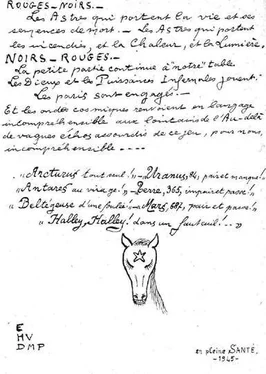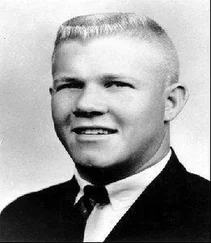It was this desire to serve the country, Petiot said, that forced him to assume the false identity Dr. François Wetterwald, alias of Captain Henri Valeri. As a thirty-three-year-old, he’d hoped to see more action than he did as a forty-seven-year-old, as his Valeri papers described him. He also told his FFI colleagues that he had to adopt the false identity to escape former Gestapo agents, Nazi informers, and other enemies who wanted to punish him for his services to the Resistance.
If Petiot had committed so many patriotic services for the Resistance, Gollety asked, why did he not simply tell the police his story after the Liberation? Petiot said that the accusations made against him by the “German press” were so “manifestly false” that he could not imagine anyone believing them. Besides, he said, “I did not go to the police because the police had not yet been purged of collaborators, and I was more useful to France continuing the fight than discussing my personal affairs.”
Gollety, no surprise, sometimes suffered migraine headaches during the pretrial questioning. On one such occasion, when he looked particularly disturbed, Floriot reminded him that there was a doctor present. Petiot, laughing, offered to give his interrogator an injection.
AS Gollety could not evaluate the merits of Petiot’s claims to have served the Resistance on his own, he summoned two consultants, Lieutenants Jacques Yonnet and Albert Brouard of the military security organization Direction Générale des Etudes et Recherches (DGER). Both men, well-versed in the culture and traditions of the underground, would question Petiot at length about his activities.
Lieutenant Jacques Yonnet was the author of the Résistance article about Petiot that helped uncover his whereabouts. A twenty-nine-year-old who had been wounded by a German grenade and captured at Boult-sur-Suippe in June 1940, Yonnet had escaped and returned to Paris, where he taught in a vocational college, collected material for a history of the city of Paris that he hoped to write, and hung out with a smart bohemian set with radical leanings. Yonnet had begun using the alias “Ybarne,” which he had borrowed from a priest who had died in his prisoner-of-war camp.
Joining the Resistance in 1943, Yonnet had operated a clandestine radio and mapping service. One of his main tasks was helping London coordinate bombing raids against sites most likely to harm German interests and yet result in the fewest French casualties. Yonnet had expanded his role, recruiting and personally hiding a downed Allied pilot in his apartment on the Left Bank. His associate, Albert Brouard (Brette), a forty-three-year-old former police inspector who joined the Resistance in May 1942, had helped Allied pilots escape to Spain.
Neither Yonnet nor Brouard had heard of Fly-Tox. When they asked him for names of colleagues, Petiot refused to answer. That would have been an understandable position under the Occupation, when the lives of his comrades and their families were at stake. But now, after the Liberation, this stance seemed peculiar at best. Even when Yonnet and Brouard promised complete confidentiality, Petiot scoffed at their guarantees. He would not—or could not—name a single person from his organization.
The names he did mention, however, raised many questions. When Petiot had said that Pierre Brossolette could attest to his activities, that man could not confirm anything because he had been dead for seven months. On March 22, 1944, after his arrest by the Gestapo, Brossolette had jumped from a sixth-floor window on avenue Foch rather than risk betraying fellow Resistants under torture. Another Resistant Petiot mentioned was “Cumulo” of the Arc-en-Ciel (Rainbow) network. Jean-Marie Charbonneaux (“Cumuleau”) had among other things worked in the information section of Arc-en-Ciel, concentrating on industrial and military intelligence and establishing a network to help Allied aviators evade capture.
Petiot said that he provided security for this man and had even served as a double. This was an odd statement, given that the twenty-five-year-old Charbonneaux was almost half his age and did not look like him. Petiot also said that he eliminated traitors who attempted to infiltrate Charbonneaux’s organization, though this claim also did not hold up under scrutiny. Charbonneaux could not confirm Petiot’s assertions, either, because he, too, was dead. In October 1943, while fleeing the attack of the feared Belgian torturer who used the false name Christian Masuy (inventor of the bath torture method), Charbonneaux was shot in the thigh. He staggered to a nearby building at 4 rue Francisque Sarcey, where he made his way up to the fifth floor and attempted to escape via the roof or gutter. Masuy and his men pursued. Charbonneaux jumped, nearly bringing Masuy with him.
Petiot never elaborated on the unnamed man from London who had supposedly trained him, or provide any details on the training he had allegedly received. He only said it had helped him invent his own simple, cheap, and highly effective plastic explosive that consisted of a couple of bottles filled with gasoline and sulfuric acid. Once they were hidden on a Nazi supply train, the bottles—separated by a cork and suspended from the ceiling by a string—would knock and ignite, creating a powerful explosion. Petiot also claimed that this man from London introduced him to a Resistance network, Agir (Action).
As Yonnet and Brouard knew, this was another legitimate organization with major achievements. Established by Michel Hollard, a French businessman with the gas engine company Maison Gazogène Autobloc, Agir had recruited many railway stationmasters, hotel owners, dockyard foremen, and other patriots to inform on German military positions and troop movements. With more than one hundred agents at its height, Agir had uncovered the exact placement of coastal batteries, departure schedules for ships, and even plans for a new torpedo powered by hydrogen peroxide. Agir’s most dramatic coup, however, was identifying one hundred V-1 launching sites in northern France and even swiping the blueprint for the inclined platform from the overcoat pocket of a German engineer while he read the newspaper in the bathroom. This information would spare London much grief in the rocket attacks. Eisenhower later suggested that this piece of intelligence had helped ensure that D-Day invasion plans were not postponed, if not derailed.
No one in Agir, however, seemed to know anything about Marcel Petiot or his alleged Resistance activities. Indeed, Petiot’s answers to Yonnet’s and Brouard’s questions were curiously uneven. Sometimes he seemed to show an intimate knowledge of the Resistance; other times he garbled the most basic facts. As for Petiot’s alleged code number, “46,” Yonnet and Brouard said that a ludicrously low number was unknown in the history of the Resistance. Who gave it to you? they asked. Petiot’s answer—that he no longer remembered—was a serious error. Members of the Resistance were trained to give the standard response: “A guy who did nothing but that.”
25.
THE KNELLERS
WHILE WE DEBATE, THE DIE IS CAST.
—Jean-Paul Sartre
AS Gollety assembled the Petiot dossier, Albert Camus gave Jean-Paul Sartre an extraordinary opportunity. The United States State Department was looking for eight French journalists and former members of the Resistance to take a seven-week tour of the country, all expenses paid. Camus asked if Sartre was interested in representing Combat . “Shit! I’ll run over there,” Sartre said, accepting the offer. Simone de Beauvoir later said that she had never seen him so happy.
On January 11, 1945, Sartre departed on a twenty-four-hour flight with three stops in a nonpressurized DC-8 military plane. It was his first trip outside Europe. He would write thirty-two articles, published in Combat and Le Figaro , detailing his experiences in a place he had earlier equated with the future: skyscrapers, jazz, movies. In Manhattan, Sartre would dine with Antoine de Saint-Exupéry’s widow, Consuelo, in her apartment overlooking the East River, which had been decorated for Greta Garbo. Her husband, the author of the previous year’s The Little Prince , had disappeared on a reconnaissance flight over Corsican waters on July 31, 1944. Sartre met W. H. Auden, attended a private screening of Citizen Kane , and sought out the jazz he’d long loved, including a performance by Charlie Parker on Fifty-Second Street.
Читать дальше












